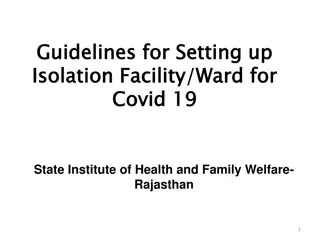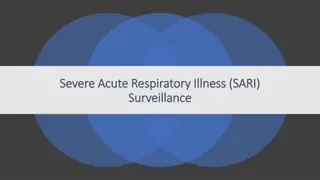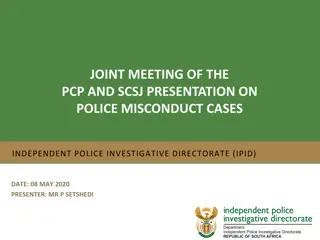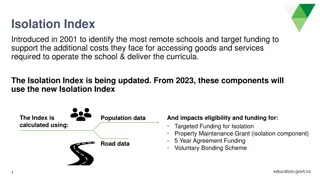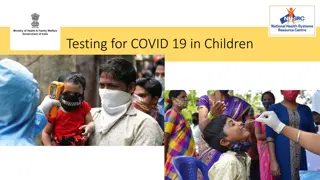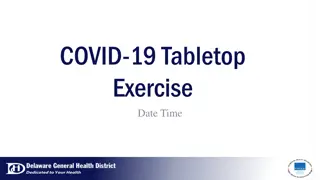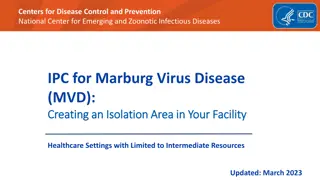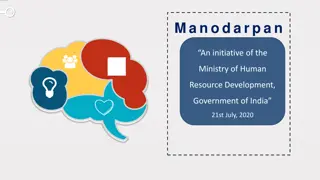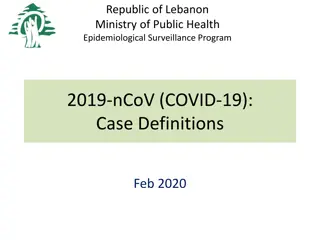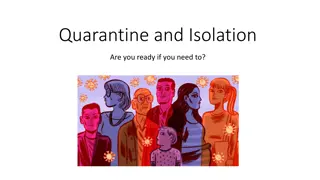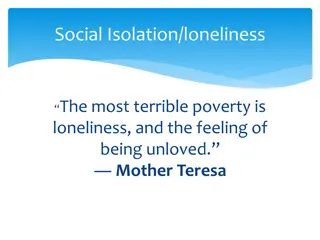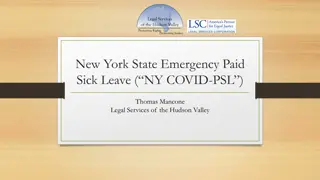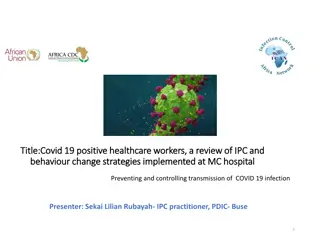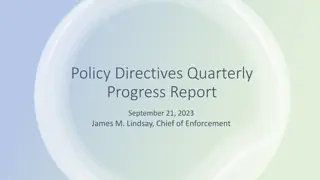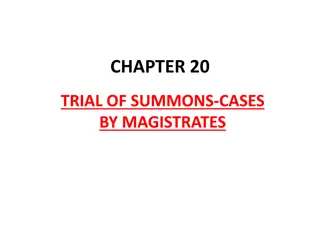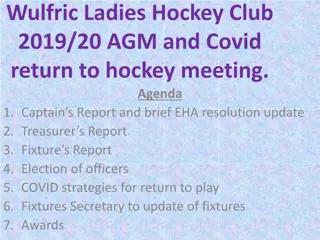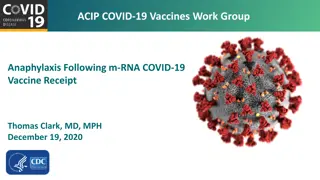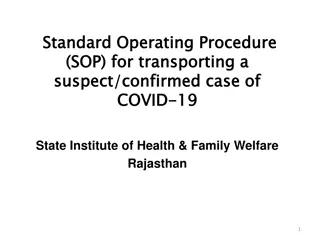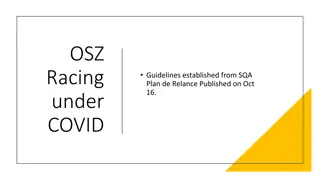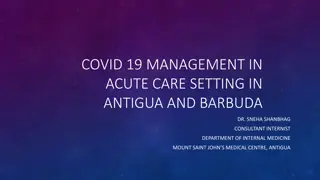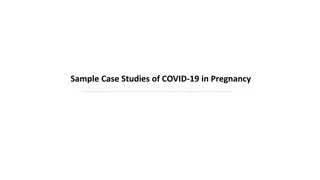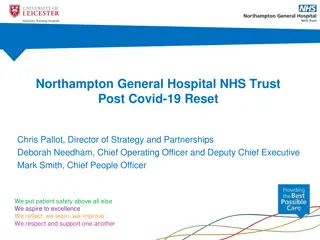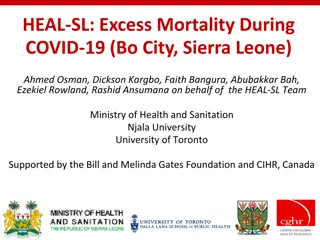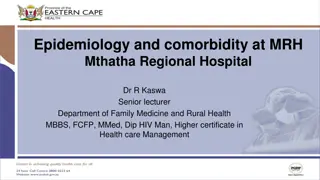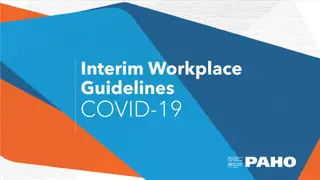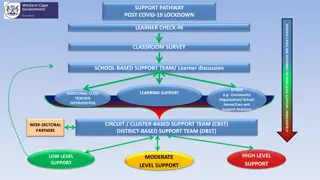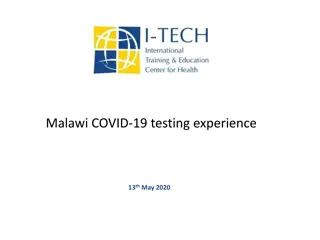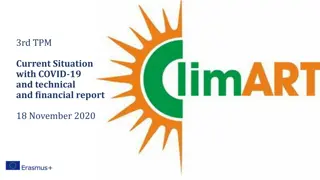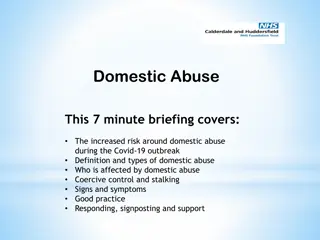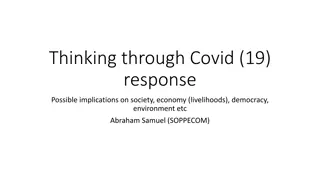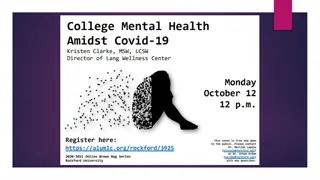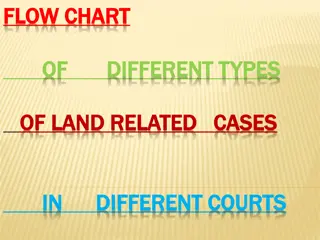Revised Guidelines for Home Isolation of COVID-19 Cases in India
The Ministry of Health & Family Welfare in India has issued revised guidelines for home isolation of very mild/pre-symptomatic/asymptomatic COVID-19 cases. Patients eligible for home isolation must have the necessary facility for self-isolation. Special considerations apply to elderly patients and those with certain co-morbid conditions. Caregivers and close contacts are advised to take Hydroxychloroquine prophylaxis. The Arogya Setu App should be downloaded for health monitoring. Monitoring, documentation, and instructions are crucial during home isolation. Health authorities need to closely monitor patients under home isolation. Mechanisms for shifting patients in case of violations must be in place.
Download Presentation

Please find below an Image/Link to download the presentation.
The content on the website is provided AS IS for your information and personal use only. It may not be sold, licensed, or shared on other websites without obtaining consent from the author. Download presentation by click this link. If you encounter any issues during the download, it is possible that the publisher has removed the file from their server.
E N D
Presentation Transcript
Government of India Ministry of Health & Family Welfare Revised guidelines for Home Isolation of very mild/pre-symptomatic/asymptomatic COVID-19 cases
Patients eligible for home isolation The symptomatic/asymptomatic case . Should have the facility at their residence for self-isolation. Patients suffering from immune compromised status are not eligible for home isolation. Elderly patients aged more than 60 years and those with co-morbid conditions such as Hypertension, Diabetes, Heart disease, Chronic lung/liver/ kidney disease, Cerebro-vascular disease etc shall only be allowed home isolation after proper evaluation by the treating medical officer. Acare giver should be available to provide care on 24 x7 basis. clinically assigned as a very mild/pre- person should be
The care giver and all close contacts of such cases should take Hydroxychloroquine prophylaxis as per protocol . Download Arogya Setu App on mobile (available at: https://www.mygov.in/aarogya-setu-app/) and it should remain active at all times. The patient shall agree to monitor his health and regularly inform his health status to the District Surveillance Officer, who will facilitate further follow up by the surveillance teams. The patient will fill in an undertaking on self-isolation (Annexure I) and shall guidelines.. follow home quarantine In addition to the guidelines on home-quarantine available at:https://www.mohfw.gov.in/pdf/Guidelinesforhomequar antine.pdf, the required instructions for the care giver and the patient as inAnnexure II shall be also followed.
Difficulty in breathing, Dip in oxygen saturation (SpO2 < 95%) Persistent pain/pressure in the chest, When to seek medical attention?? Mental confusion or inability to arouse, Slurred speech/seizures Weakness or numbness in any limb or face Developing lips/face bluish discolorations of
States/ Districts should monitor all such cases. The health status of those under home isolation should be monitored by the field staff/surveillance teams through personal visit .The clinical status of Role of State/District Health Authorities each case shall be recorded by the field staff/call center (body temperature, pulse rate and oxygen saturation). The field staff will guide the patient on measuring these parameters and provide the instructions (for patients and their care givers), as detailed in Annexure II.
Details about patients under home isolation should also be updated on COVID-19 portal and facility app (with DSO as user). Mechanism to shift patient in case of violation or need for treatment has to be established and implemented. All family members and close contacts shall be monitored and tested as per protocol by the field staff.
Patient under home isolation will stand discharged after 10 days of symptom onset No fever for 3 days continuously.. The patient will be advised to isolate at home and self-monitor their health for further 7 days. There is no need for testing after the home isolation period is over. When to discontinue Home Isolation??
Patient should at all times use triple layer medical mask. Discard mask after 8 hours of use or earlier if they become wet or visibly soiled. Mask should be discarded only after disinfecting it with 1% Sodium Hypo-chlorite. Instructions for the patient Patient must stay in the identified room and away from other people in home. Patient must take rest and drink lot of fluids to maintain adequate hydration Follow respiratory etiquettes all the time.
Hands must be washed often with soap and water for at least 40 seconds or clean with alcohol based sanitizer. Don t share personal items with other people. Clean surfaces in the room that are touched often (tabletops, door knobs, handles, etc) with 1% hypochlorite solution. The patient must strictly follow the physician s instructions and medication advice. The patient will self-monitor his/her health with daily temperature monitoring and report promptly if develops any deterioration of symptom.
1. Mask: The caregiver should wear a triple layer mask appropriately when in the same room with the ill person. Front portion of the mask should not be touched or handled during use. Instructions for care-givers If the mask gets wet or dirty with secretions, it must be changed immediately. Discard the mask after use and perform hand hygiene after disposal of the mask. He/she should avoid touching own face, nose or mouth.
Hand hygiene must be ensured following contact with ill person or his immediate environment. Hand hygiene should also be practiced before and after preparing food, before eating, after using the toilet, and whenever hands look dirty. Use soap and water for hand washing if hands are not visibly soiled. at least for 40 seconds. Alcohol-based hand rub can be used, 2.HandHygiene After using soap and water, use of disposable paper towels to dry hands is desirable. If not available, use dedicated clean cloth towels and replace them when they become wet. Perform hand hygiene before and after removing gloves
Avoid direct contact with body fluids of the patient, particularly oral or respiratory secretions. Use disposable gloves while handling the Exposure topatientenvironment patient. Avoid exposure to potentially contaminated items in his immediate environment (e.g. avoid sharing cigarettes, eating utensils, dishes, drinks, used towels or bed linen).
Food must be provided to the patient in his room. Utensils and dishes used by the patient should be cleaned with soap/detergent and water wearing gloves. The utensils and dishes may be re-used. Clean hands after taking off gloves or handling used items. Use triple layer medical mask and disposable gloves while cleaning or handling surfaces, clothing or linen used by the patient. Perform hand hygiene before and after removing gloves.
The care giver will make sure that the patient follows the prescribed treatment. Care of the patient and familymembers The care giver and all close contact will self- monitor their health with daily temperature monitoring and report promptly if they develop any symptom suggestive (fever/cough/difficulty in breathing). of COVID-19
STAY AT HOME,STAY SAFE


